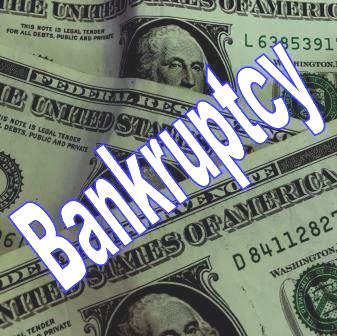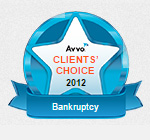
Bankruptcy facts give us some perspective on what leads up to financial problems and what this legal option involves.
Americans love their credit cards. You often can’t check out of a big box store without the cashier … if there is still a cashier … trying to sell you their credit card. The average American has 2.6 credit cards. The average American also has an estimated revolving credit card balance of just under $7,000.
As long as the balances present manageable monthly payments, and as long as life doesn’t bring unpleasant surprises, many people ride the wave of monthly debt. At the same time, when the debt becomes unmanageable or when events out of one’s control take place, bankruptcy presents an option to consider.
Here are five key bankruptcy facts:
Bankruptcy Law Reform did not make a Chapter 7 impossible
Congress made changes to bankruptcy law back in 2005 leaving many with the impression that discharging credit card debt became impossible or next to impossible. True the law did add some bumps in the road. But the courts themselves reported bankruptcy filings shot up 32% in 2009. That increase came 4 years after the changes in the law and the year after the start of what most observers call a major U.S. recession.
Key bankruptcy reforms included a means test. That means those with higher income can’t file a Chapter 7. Also, the changes require people to take a “credit counselling” class before filing. But the brief counselling can be completed in one sitting, on-line. And there are so many agencies offering the service that they’re competing to see who can offer the class at the lowest price.
Why do people file bankruptcy?
The common perception of bankruptcy filers sees people who simply let their credit spending get out of control. But in fact the actual reasons people find themselves thinking about the bankruptcy option and then going through with it include factors wholly out of their control. Those reasons include:
- Unexpected expenses
- Income Reduction
- Loss of a Job
- Illness/Injury/Unpaid Medical Bills
No one wants any of the above to happen to them. We can’t predict that a major illness will hit us with medical bills. Unfortunately health insurance companies do not pay all medical bills and some still have no health coverage. And those who purchase a home depending on two incomes face severe difficulty if one or both wage earners become victim to company layoffs.
These are some of the reasons – entirely out of the control of the individual – that people find themselves at least taking a look at bankruptcy as an option.
Chapter 7 brings faster debt relief but Chapter 13 can sometimes do more
A successful Chapter 7 bankruptcy wipes out unsecured debt, most often in under 4 months. This includes credit card balances, unpaid medical bills and even collection and law suit judgments based on those two types of debt. Chapter 13 makes up the other consumer bankruptcy.
The Chapter 13 requires a three to five year payment plan in which at least a portion of outstanding debt is usually paid. At the same time though a Chapter 13 stops a foreclosure. Advantages of a Chapter 13 include giving the homeowner the opportunity to pay off any mortgage arrearage. Under the right circumstances car loans that exceed the value of a car can be crunched down.
The goal of both of these consumer bankruptcies is a discharge under section 727 of the U.S. Bankruptcy Code. And yes, as long as you haven’t committed fraud, a bankruptcy filing will stop collection lawsuits and other collection action by creditors.
Bankruptcy is not fatal to your credit score
Under bankruptcy law the fact of filing bankruptcy stays on your credit report for 10 years. At the same time, many who have filed a consumer bankruptcy can see their credit scores go up after the bankruptcy. First of all your debt to income ratio plays a key role in the credit rating. The bankruptcy discharges unsecured debt such as credit cards. Assuming your income stays the same, the debt to income ratio increases, which stimulates a better credit rating.
By following a few key steps bankruptcy filers can improve their credit rating. For example, have a reasonable car payment and pay it, early or on time, regularly. We have covered the steps to building credit after bankruptcy in another blog article.
Bankruptcy filers include people with all levels of education
As we pointed out above, many bankruptcy filings take place due to events totally out of the control of the person filing. Such events include unexpected and daunting medical bills. So, statistics show that people filing bankruptcy include all educational levels. Those with bachelor’s degrees make up over 12% of bankruptcy filers. The same numbers from the Institute of Financial Literacy show 5% of all filers hold graduate level degrees.
Those are 5 key bankruptcy facts we’ve summarized for this article. People who decide to file quickly realize that, by the number of filings, they are not alone.
Bankruptcy Facts and Filing Statistics
People filed 12.8 million consumer bankruptcy petitions between 2005 and 2017. Those numbers, from the Administrative Office of the U.S. Courts itself, confirm that the bankruptcy option survived changes to bankruptcy law in 2005. Of those filings 68% came under Chapter 7 and 32% sought relief under Chapter 13 of the U.S. Bankruptcy Code.
Who knows why but as of July, 2019, people in the Commonwealth of Massachusetts filed 10% fewer consumer bankruptcy filings compared to the same time period the previous year. At the same time, New Hampshire’s consumer bankruptcy filings went up 5%. Annual variations in the number of bankruptcy filings likely relate more to changes in economic conditions. Filings went down after the 2008 recession wound down. But statistics confirm that bankruptcy continues to present one option available to those who find themselves in difficult circumstances.
The author, attorney Andrew D. Myers, represents consumer bankruptcy clients in New Hampshire and Massachusetts. The office offers a free initial consultation in both states. Contact the offices through this website or call.
Sources:
Americans Rely Less on Credit Cards Than in Previous Years, Gallup, April 25, 2014.
Bankruptcy Statistics, American Bankruptcy Institute, July 2019.
Just the Facts: Consumer Bankruptcy Filings, 2006-2017, uscourts.gov, March 7, 2018.
NerdWallet’s Best Credit Card Tips for January 2019, Ribin Saks Frankel, Nerdwallet, Jan 8, 2019.
Visits: 150




